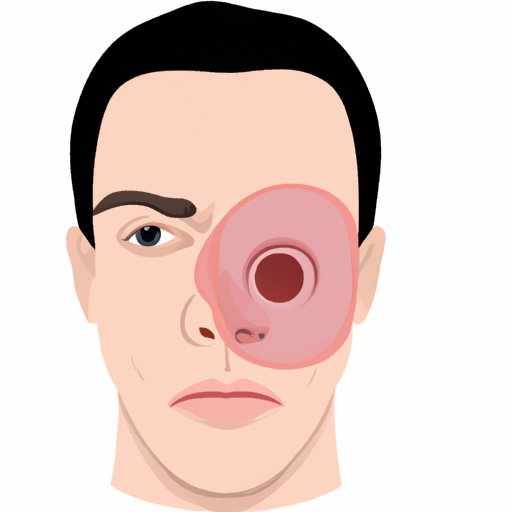
How do You Know if Your Nose is Broken?
Breaking your nose can be a painful and confusing experience that leaves you wondering what to do next. While minor nose injuries can be treated at home, more severe cases require immediate medical attention to avoid further complications. In this article, we’ll discuss how to distinguish between a broken nose and a regular nose injury, how to take initial first aid steps, what to expect from medical treatment, and how to recover effectively. So, whether you’ve just sustained a nose injury, or you want to know what to do if it happens in the future, this article will provide you with all the information you need to know.
Signs to Look for When You Suspect a Broken Nose
The most obvious sign of a broken nose is pain and swelling in the affected area. You may also notice bruising and difficulty breathing through your nose. In some cases, the nose may appear deformed or crooked, especially if the injury resulted in a displaced fracture. Additionally, a broken nose can lead to complications such as nosebleeds, sinus infections, and even a concussion. If you experience any of these symptoms, it’s important to take immediate first aid steps to avoid further harm.
Taking Immediate First Aid Steps If You Think You Have a Broken Nose
Before you seek treatment from a medical professional, some first aid steps can mitigate the pain and swelling that may accompany a broken nose. Firstly, you should apply ice to your nose immediately after the injury to reduce swelling and inflammation. Taking over-the-counter pain relievers such as ibuprofen or acetaminophen can also help to manage pain. If you notice any signs of a concussion, you should also seek immediate medical attention. Additionally, if you are experiencing bleeding from your nose, you should pinch your nostrils shut and lean forward slightly to prevent blood from flowing to the back of your throat and avoid potential choking hazards. In some cases, you may need to use nasal decongestants to help manage nasal congestion or stuffiness related to your injury.
What to Do After Sustaining a Broken Nose Injury
Regardless of the severity of your nose injury, seeking medical attention is crucial to avoid potential complications. A healthcare professional will examine your nose, ask you about your symptoms, and conduct imaging tests to determine the extent of the damage. They may also refer you to a specialist, such as an ear, nose, and throat (ENT) doctor for further diagnosis or treatment. If your injury is not too severe, you may be instructed to rest and take it easy in the coming weeks and months while your body heals itself.
The Different Types of Broken Nose Injuries and How to Identify Them
Nose injuries can come in various shapes and sizes, and different types of injuries require different treatment approaches. The three primary types of nose injuries are simple fractures, displaced fractures, and septal hematomas. Doctors typically diagnose these injuries by conducting imaging tests such as x-rays or CT scans. A simple fracture may not require surgical intervention and can heal on its own over time. A displaced fracture, on the other hand, may require manual realignment or surgical intervention to heal properly. A septal hematoma occurs when a small, localized collection of blood forms within the nasal septum, and prompt medical attention is necessary to drain this injury out to avoid complications.
Healing From a Broken Nose: The Road to Recovery
Recovery from a broken nose can vary depending on the severity of your injury. Typically, it takes around six to eight weeks to heal entirely from a broken nose. During this time, you should rest and avoid physical activities that could potentially harm your nose. You may also need to attend follow-up appointments with your doctor to monitor your progress and address any additional concerns you may have. Furthermore, pain management is vital to make the healing process smoother. Simple pain management measures include taking over-the-counter pain medications or applying a cold compress to the affected area. In some rare cases, complications may arise, such as disruptions to your nasal airflow or sinus infections. If you notice any complications, it is important to seek medical attention immediately.
Can You Fix a Broken Nose Without Surgery? Exploring Your Options
While surgery may be necessary for more severe cases of nose injuries, such as displaced fractures, scrupulous manual realignment, or nasal packing, there are non-surgical treatment options available. In some cases, your doctor may recommend non-surgical realignment to help restore your nose to its natural shape. Nasal splinting is another non-surgical option that involves applying a plastic or metal device to your nose to help stabilize it during the healing process.
Conclusion
In conclusion, breaking your nose can be a painful experience, but it’s essential to identify when your nose is broken for proper treatment. If you suspect a broken nose, look out for signs such as pain, swelling, bruising, and difficulty breathing through your nose. Applying first aid steps such as applying ice or taking pain relievers can help to alleviate the pain caused by nose injuries. Still, seeking medical attention is key in ensuring a speedy recovery and mitigating the risks of potential complications. Remember, while it may be overwhelming at first, seeking help from a healthcare professional can help you heal faster and avoid complications more easily.





